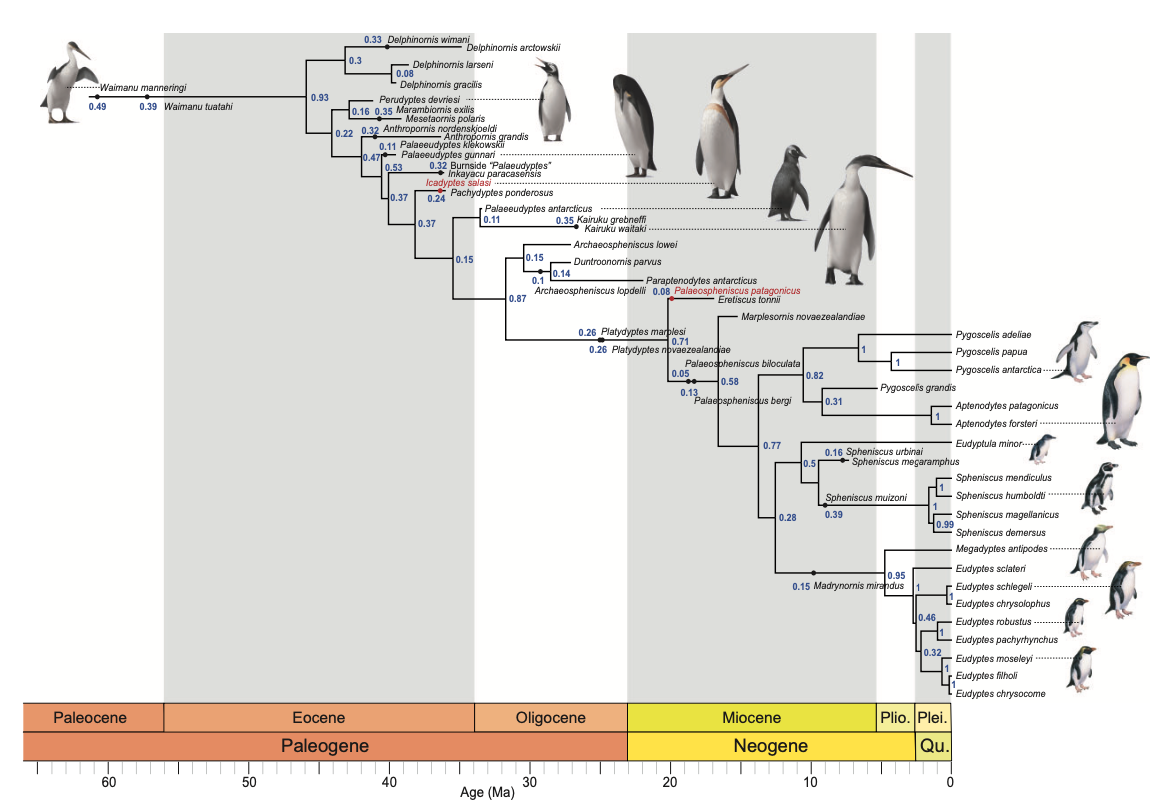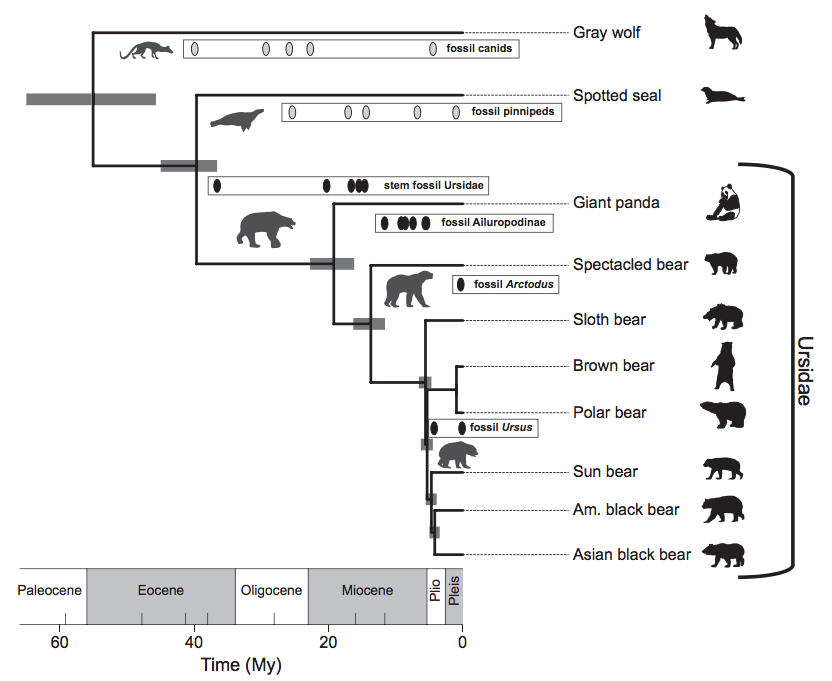Macroevolution
Inferring the phylogeny of extant species is a classic aim for systematists. The Computational Evolution group works on inferring the past state (i.e. the phylogenetic tree) of the macroevolutionary process, together with inferring the past speciation and extinction dynamics. We developed the fossilized birth-death process which introduces a coherent framework for inferring phylogenies from molecular, morphological, and paleontological data. The novelty of this approach is that it naturally regards fossils explicitly as part of the phylogeny – that is, both fossils and extant species are an outcome of speciation and extinction dynamics – as compared to previous tools giving fossils a special role. We first applied the framework to understand bear evolution and then to understand penguin evolution. NZZ featured an external pagearticlecall_made on our work on the penguin phylogeny.
Furthermore, the fossilized birth-death process is used for the development of phylodynamic tools to identify the main drivers promoting speciation and extinction. By using both molecular data of extant species and fossil data of extinct species we bridge between the fields of molecular systematics and paleontology.


